La Royauté sociale de Notre Seigneur Jésus-Christ par le Cardinal Pie. Instrução pastoral do Cardeal Pie
|
La Royauté sociale
de Notre Seigneur Jésus-Christ
par le Cardinal Pie
P. THEOTIME DE SAINT JUST O.M.C.
LECTEUR EMERITE EN THEOLOGIE
Sur l'intolérance doctrinalepar le Cardinal Pie
Instrução pastoral do Cardeal Pie
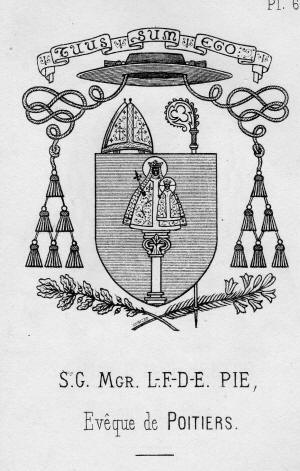
Brasão do Cardeal Pie
ANTICRISTO
Instrução pastoral do Cardeal Pie - Quaresma 1863
Anticristo, o que nega que Jesus seja Deus; anticristo, o que
nega que Jesus seja homem; anticristo, o que nega que Jesus seja homem e Deus ao
mesmo tempo.
Um anticristo, nos diz São João, nega o Pai, pois negando o
Pai nega o Filho: Hic est antichristus qui negat Patrem et filium (I Jo.
2, 22). De fato, não há anticristianismo mais radical do que aquele que nega a
divindade em sua raiz, em seu princípio. Como o Cristo seria Deus se Deus não
existisse? Ora, negar o ser divino, a substância divina, a personalidade divina
e introduzir não sei que outra teodicéia é prova de que suprimem a realidade,
substituindo-a por abstrações e sonhos que flutuam entre o ateísmo e o panteísmo
ou que não têm sentido algum. LER
MAIS...
Padre Pio: On spirituality, Vatican II and the Novus Ordo Missae
| By Fr. Jean, OFMcap and printed originally in the May 1999 issue of The Angelus magazine | |||
| Padre Pio (May 25, 1887 —September 23, 1968) was beatified on May 2, 1999, by Pope John Paul II. He is the only priest known to have received the full stigmata. He never celebrated the Novus Ordo Missae. | |||
| |||
Much has
been written about Padre Pio —more than 600 works, it seems —and the authors
always stress the extraordinary side of his life: not only his particular
charisms (reading souls, healing, raising people from the dead, bilocating,
ecstasies, exuding perfume, prophesying, etc.), but also the incredible
sufferings which he endured from his earliest childhood, the persecutions
undergone from some churchmen and even brothers in religion, as well as his two
great charitable works: the founding of the House of Suffering, and prayer
groups.
In
short, they present him to us as a "saint" more to be admired than imitated, so
that, ultimately, we miss the most interesting lessons to be learned from this
life, and the practical applications that could transform our own. We shall try,
therefore, however imperfectly, to set forth a few of these lessons, hoping that
we shall all be able to profit from them, and that the Padre, from high heaven,
will himself succor us, as he has promised to all those who would like to become
his "spiritual children."
At the
dawn of this life totally sacrificed to God and to souls, there is to be found a
pious, poor and numerous family, where the abnegation of each member softens and
transforms the harsh realities of daily life. Here we see confirmed the saying
of Bishop de Segur that it is in families where the spirit of sacrifice is
lacking that vocations are most at risk. Baptized the day after his birth — a
grace for which he was grateful all his life —Padre Pio was christened
Francesco, presage of his Franciscan vocation, which was to be discovered on the
occasion of a visit from a Capuchin monk begging food for the convent. Even so,
his vocation was not decided without struggle:
He was
not yet 16 years old when he entered the novitiate. Above the door of the
cloister, as a welcome, he read the sign: "Do penance or perish." The
daily rule of life included very many prayers, enough work, and little reading,
being restricted especially to the study of the Rule and the
Constitutions.
Brother
Pio made himself conspicuous by the abundance of the tears he shed during the
morning period of mental prayer, which in Capuchin houses is consecrated to the
meditation of the Passion; tears so abundant that it was necessary to spread a
towel in front of him on the floor of the choir. As with St. Francis, it was to
this loving and compassionate contemplation of Jesus crucified that he was to
owe the grace to receive later on the painful stigmata in his body. Even so, as
he confided to his spiritual director, Fr. Agostino: "In comparison to what I suffer
in my flesh, the spiritual combats that I endure are much
worse."
Atoning
for Sinners: Interior Trials
It would
seem that God expects the just to expiate in a special way, by means of
temptation, the public sins of their contemporaries. At a time when
psychoanalysis, with its knack for explaining away guilt and sin, was gaining
sway, Padre Pio —like the little Theresa —had to undergo an almost unbearable
crisis of scruples, which tormented him for three long years. Then after the
storm came the night, a night of the soul which lasted for dozens of years, with
only occasional glimmers of light:
It is
with the thought of his mystical experiences in mind that his maxims should be
meditated: "Love
is more beautiful in the company of fear, because it is in this way that it
becomes stronger." "The more one loves God, the less one feels
it!"
St.
Theresa of the Child Jesus opposed to the proud rationalism of her day the
little way of spiritual childhood, but she also expiated it by terrible
temptations against faith. Her cry, "I will believe!" is well known.
Padre Pio also experience violent and prolonged temptations against faith, as
his letters to Fr. Agostino testify:
What
precious lessons for us, should we, for example, be surprised at finding
ourselves tempted to such a degree.
Spiritual
Director
Padre
Pio overcame these terrible trials by following what had been taught him in the
novitiate: perseverance in prayer, mortification of the senses, unshakable
fidelity to the demands of one’s duty of state, and, finally, perfect obedience
to the priest in charge of his soul. His painfully acquired experience allowed
him to draw to himself souls desirous of perfection, and to be
demanding.
| |||
| |||
To those
who declare themselves unworthy to receive holy Communion, he
answers:
To
another, who told him that the daily examination of conscience seemed useless,
since his conscience showed him clearly at each action whether it was good or
bad, he replied:
When
Padre Pio was condemned to not exercise any ministry, he spent his free time,
not in reading newspapers —"the Devil’s gospel" —but in reading books of
doctrine, history and spirituality. Despite this, he would still say:
"One looks for
God in books, but finds Him in prayer."
His
counsels for mental prayer are simple:
The same
holds for assisting at the Holy Sacrifice of the Mass: it is more concerned with
making acts (of contrition, faith, love...) than with intellectual reflections
or considerations. To someone asking whether it is necessary to follow the Mass
in a missal, Padre Pio answered that only the priest needs a missal. According
to him, the best way to attend the holy sacrifice is by uniting oneself to the
Virgin of Sorrows at the foot of the cross, in compassion and love. It is only
in paradise, he assures his interlocutor, that we will learn of all the benefits
that we received by assisting at holy Mass.
Padre
Pio, who was so affable and pleasant in his relations with people, could become
severe and inflexible when the honor of God was at stake, especially in
church.
Not even
an inattentive choirboy would be spared: "My child, if you want to go to
hell, you don’t need my signature."
The
post-war fashions fell under the same censure:
One day
his spiritual director reproached him for his harsh conduct. He replied: "I
could obey you, but each time it is Jesus who tells me how I am to deal with
people." His severe manner, then, was inspired from above, uniquely for the
honor of God and the salvation of souls.
And let
no one reproach him for lack of charity: "I beg you not to criticize me by
invoking charity, because the greatest charity is to deliver souls held fast by
Satan in order to win them over to Christ."
Padre
Pio and the Novus
Ordo Missae
| |||
| |||
The same
year, during the conciliar euphoria that was promising a new springtime to the
Church, he confided to one of his spiritual sons: "In this time of darkness,
let us pray. Let us do penance for the elect"; and especially for the one
who has to be their shepherd here below: All his life, he immolated
himself for the reigning pope, whose photograph was among the rare images that
decorated his cell.
Renewal
of Religious Life?
There
are other scenes from his life that are full of meaning, for example, his
reactions to the aggiornamento the religious orders concocted in the wake
of Vatican II. (The citations here are taken from a book bearing an
imprimatur):
A year
later, the same scene was repeated for the aggiornamento of the
Capuchins:
One day,
some confreres were discussing with the Father Definiteur General [The counselor
or adviser to the general or provincial of a religious order —Ed.] the
problems in the Order, when Padre Pio, taking a shocked attitude, cried out,
with a distant look in his eye: "What in the world are you up to in Rome?
What are you scheming? You even want to change the Rule of St. Francis!" The
Definiteur replied: "Padre, changes are being
proposed because the youth don’t want to have anything to do with the tonsure,
the habit, bare feet...."
If we
consider that Padre Pio was a veritable alter Christus, that his entire
person, body and soul, was as perfectly conformed as possible to that of Jesus
Christ, his stark refusal to accept the Novus Ordo and the
aggiornamento should be for us a lesson to learn. It is also noteworthy
that the good Lord desired to recall His faithful servant just before they were
implacably imposed on the Church and the Capuchin Order. Noteworthy, too, is the
fact that Katarina Tangari, one of Padre Pio’s most privileged spiritual
daughters, so admirably supported the priests [of the SSPX] of Ecône until her
death, one year after the episcopal consecrations of 1988.
Final
Lesson: Fatima
Padre
Pio was even less obliging towards the prevailing social and political order, or
rather, disorder (in 1966): "the confusion of ideas and the reign of
thieves." He prophesied that the Communists would come to power,
"by surprise,
without firing a shot... It will happen overnight."
This
should not surprise us, since the requests of our Lady of Fatima have not been
listened to. He even told Bishop Piccinelli, that the red flag will fly over the
Vatican, "but that will pass." Here again, his conclusion rejoins that of
the Queen of Prophets: "But in the end, my Immaculate Heart will
triumph." The means by which this prophesy will come to pass, we know: by
the divine power; but it must be prompted by the two great powers in man’s
hands: prayer and penance. This is the lesson which our Lady wanted to remind us
of at the beginning of this century: God wants to save the world by devotion to
the Immaculate Heart of Mary, and there is no problem, material or spiritual,
national or international, that cannot be solved by the holy rosary and our
sacrifices.
This is
also the last lesson that Padre Pio wanted to leave us by his example, and
especially by his "prayer groups," which he established throughout the world.
"He was never without a rosary, there was even one under his pillow. During the
day he recited several dozens of rosaries." A few hours before he died, as
those around him urged him to speak a few more words, all he could say was:
"Love the Blessed
Virgin and make her loved. Always say the rosary!"
The
imminent elevation of Venerable Padre Pio is certainly going to arouse in many
souls both curiosity and admiration. We could take advantage of the opportunity
to remind them of these few lessons, if indeed we know how to put them into
practice ourselves, in the merciful love of the Most Holy Hearts of Jesus and
Mary.
|
Solemn High Traditional Latin Mass at the Blessed Sacrament Cathedral (May 5, ++++++++++++++++++++++++++++++++++++++++++++++++++++++++++++++++++++++++++++++++++++++++++++++++++++++++++++++++++++++++++++++++++++++++++++++++++++++++++++++++++++++++++++++++++++++++++++++ .Corpus Christi: St. Mary Church, Norwalk .Varia from the USA . Berlin, Germany (Institute of St. Philip Neri)
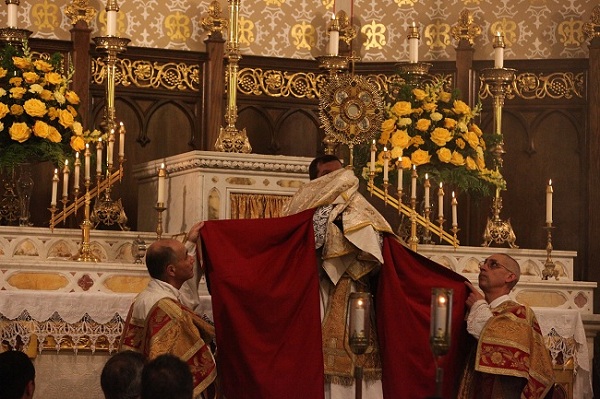
The Feast of Corpus Christi at St. Mary Church, Norwalk
As excelências da batina e do hábito religioso .
Articles about the Vatican II Council
ARTICLES about the
| Vatican II Council | |
| SSPX FAQ #6 What are Catholics to think of Vatican II?"Not all of Vatican II is binding": Analyzing the comments of Cardinal Brandmuller "Strangely enough, the two most controversial documents" for the SSPX - those on religious freedom and on relations with non-Christians - "do not have a binding doctrinal content, so one can dialogue about them," the cardinal said... 5-24-2012 Gherardini agrees with SSPX in new book about Vatican II Msgr. Gherardini is a phenomenon producing seismic reactions in the Roman milieu. His is a dissenting voice in the all too common chorus of Hosanna in praise of the past Council... 5-11-2012 Is recognizing the SSPX questioning the Council? "The rift between the Holy See and the SSPX arises because the Society rejects these particular elements of Vatican II [religious liberty, ecumenism, collegiality], not because of an intention on the part of the Holy See to defend Vatican II as a whole"… 4-19-2012 “Magisterium or living tradition?”, Fr. Gleize denounces a false dilemma "Why this confusion? Why reduce the living magisterium to the magisterium of the present? Because since Vatican II they have been trying to invent a new magisterium. The magisterium is redefined, because its task [now] is to express the continuity of a subject and no longer the continuity of an object..." 2-3-2012 DICI NEWS SSPX answers Roman expert L’Osservatore Romano of December 2, 2011, published a study by Msgr. Fernando Ocariz, one of the four experts who represented the Holy See during the recent doctrinal discussions with the SSPX October 2009-April 2011). The central question of the magisterial value of the Second Vatican Council is addressed straightforwardly, yet nevertheless insufficiently... 1-31-2012 Msgr. Gherardini: Vatican II is not a super-dogma A translation of an insightful article by Msgr. Gherardini which provides an answer to Msgr. Ocariz's recent published defense of Vatican II. The article causes one to ask: If the Second Vatican Council is part of the Magisterium what adherence must be given to its text? 12-12-2011 Cardinal says post-conciliar Church is historically & theologically illegitimate! "But there cannot be, nor could there be, a pre-Conciliar Church and a post-Conciliar Church! If this could be so, the second one—ours—would be historically and theologically illegitimate!" 11-10-2011 Roman Debates on the eve of Vatican II’s golden jubilee It is rather encouraging to witness the controversy over the conciliar era broaden its front and coming from Rome. Fireworks are already sending sparks from all sides, on the eve of the golden jubilee of the opening of the Council... 10-28-2011 Fissures in the impregnable walls of Vatican II: a petition to the pope An SSPX.ORG commentary and some extracts about DICI's posting, "50 Catholic leaders petition Pope Benedict XVI for a more in-depth examination of the Second Vatican Council" 10-14-2011 http://www.sspx.org/articles_index.htm |
50 Catholic leaders petition Pope Benedict XVI for a more in-depth
examination of the Second Vatican Council"In our souls and
consciences as believers, this petition, written with all deference toward You,
seems perfectly in harmony, we dare say, with the work of restoring, renewing
and purifying the Church Militant that Your Holiness has courageously
undertaken, despite resistance and difficulties of all sorts that are known to
everyone..." 10-14-2011 The Second Ecumenical Vatican Council: a Debate That Has Not Taken Place, by Msgr. Brunero GherardiniThis book is a sequel to The Second Ecumenical Vatican Council: a Debate To Be Opened, that appeared in 2009. In this new work, Msgr. Gherardini does not stop at deploring that the debate on Vatican II shouldn't take place, he even shows why it would be more indispensable than ever today. And above all, he indicates how this debate could be opened, giving the reader the first elements of a rigorous analysis, far from sterile invectives and blind ovations... 9-19-2011 Vatican II: a debate between Romano Amerio, Msgr. Gherardini and Msgr. Pozzo A brief analysis on the "authentic interpretation" of Vatican II [DICI] 9-29-2010 How are Catholics to respond to the present crisis in the Church?Fr. Peter Scott gives an excellent analysis and practical answers to this important question Post-Conciliar Church: is it a new religion? This Catholic FAQ makes the proper distinctions while showing the revolutionary nature of Vatican II Two Key Points for the Church's Recovery Some insightful solutions for ending the ecclesiastical crisis 10-12-2010 Two Interpretations of Vatican II: Myth or Reality? Covers the two opposing views of the Council. Includes the article "The Erosion of the Council's Authority" Collegiality Fr. Basil Wrighton explains this keynote error of Vatican II and the liberal machinations that caused its adoption by Vatican II Reply of Archbishop Lefebvre to Cardinal Ottaviani after the CouncilWritten in December 1966, nearly a year after the conclusion of Vatican II, Archbishop Lefebvre details the confusion already occurring in missionary Africa amongst the Holy Ghost Fathers Archbishop Lefebvre Preparing the Council (1959 - 1962) A brief story on Archbishop Lefebvre's participation in preparing for Vatican II The Role of the Priestly SSPX in the Heart of the Church This 1981 Buenos Aires, Argentina conference by Archbishop Lefebvre shows the SSPX's place in the Church to form priests and in combating Modernism. He also speaks about the struggles of the traditionalists against liberals |
Congratulations...
...to the Rev. Fr. John McFarland,
FSSPX, the son of our very regular commentator Mr. John McFarland, and
the other five newly-ordained priests of the Society of Saint Pius X (and two of
the OSB monastery in New Mexico), as well as the twelve new deacons.http://rorate-caeli.blogspot.com/

créditos
ao blog: www.santamaeddeus.blogspot.com/
Eis
aqui um texto do Padre Jaime Tovar Patrón:
Esta
breve coleção de textos nos recorda a importância do uniforme sacerdotal, a
batina ou hábito talar. Valha outro tanto para o hábito religioso próprio das
ordens e congregações. Em um mundo secularizado, da parte dos consagrados não há
melhor testemunho cristão que a vestimenta sagrada nos sacerdotes e
religiosos.
“SETE
EXCELÊNCIAS DA BATINA.”
“Atente-se
como o impacto da batina é grande ante a sociedade, que muitos regimes
anticristãos a têm proibido expressamente. Isto nos deve dizer algo. Como é
possível que agora, homens que se dizem de Igreja desprezem seu significado e se
neguem a usá-la?”
Hoje
em dia são poucas as ocasiões em que podemos admirar um sacerdote vestindo sua
batina. O uso da batina, uma tradição que remonta a tempos antiqüíssimos, tem
sido esquecido e às vezes até desprezado na Igreja pós-conciliar. Porém isto não
quer dizer que a batina perdeu sua utilidade, se não que a indisciplina e o
relaxamento dos costumes entre o clero em geral é uma triste
realidade.
A
batina foi instituída pela Igreja pelo fim do século V com o propósito de dar
aos seus sacerdotes um modo de vestir sério, simples e austero. Recolhendo,
guardando esta tradição, o Código de Direito Canônico impõe o hábito
eclesiástico a todos os sacerdotes.
Contra
o ensinamento perene da Igreja está a opinião de círculos inimigos da Tradição
que tratam de nos fazer acreditar que o hábito não faz o monge, que o sacerdócio
se leva dentro, que o vestir é o de menos e que o sacerdote é o mesmo de batina
ou à paisana.
Sem
dúvida a experiência mostra o contrário, porque quando há mais de 1500 anos a
Igreja decidiu legislar sobre este assunto foi porque era e continua sendo
importante, já que ela não se preocupa com ninharias.
Em seguida expomos sete excelências da batina condensadas de um escrito do ilustre Padre Jaime Tovar Patrón
Em seguida expomos sete excelências da batina condensadas de um escrito do ilustre Padre Jaime Tovar Patrón
Certamente
que, uma vez recebida a ordem sacerdotal, não se esquece facilmente. Porém um
lembrete nunca faz mal: algo visível, um símbolo constante, um despertador sem
ruído, um sinal ou bandeira. O que vai à paisana é um entre muitos, o que vai de
batina, não. É um sacerdote e ele é o primeiro persuadido. Não pode permanecer
neutro, o traje o denuncia. Ou se faz um mártir ou um traidor, se chega a tal
ocasião. O que não pode é ficar no anonimato, como um qualquer. E logo quando
tanto se fala de compromisso! Não há compromisso quando exteriormente nada diz
do que se é. Quando se despreza o uniforme, se despreza a categoria ou classe
que este representa.
Não
resta dúvida de que os símbolos nos rodeiam por todas as partes: sinais,
bandeiras, insígnias, uniformes… Um dos que mais influencia é o uniforme. Um
policial, um guardião, é necessário que atue, detenha, dê multas, etc. Sua
simples presença influi nos demais: conforta, dá segurança, irrita ou deixa
nervoso, segundo sejam as intenções e conduta dos cidadãos.
Uma batina sempre suscita algo nos que nos rodeiam. Desperta o sentido do sobrenatural. Não faz falta pregar, nem sequer abrir os lábios. Ao que está de bem com Deus dá ânimo, ao que tem a consciência pesada avisa, ao que vive longe de Deus produz arrependimento.
Uma batina sempre suscita algo nos que nos rodeiam. Desperta o sentido do sobrenatural. Não faz falta pregar, nem sequer abrir os lábios. Ao que está de bem com Deus dá ânimo, ao que tem a consciência pesada avisa, ao que vive longe de Deus produz arrependimento.
As
relações da alma com Deus não são exclusivas do templo. Muita, muitíssima gente
não pisa na Igreja. Para estas pessoas, que melhor maneira de lhes levar a
mensagem de Cristo do que deixar-lhes ver um sacerdote consagrado vestindo sua
batina? Os fiéis tem lamentado a dessacralização e seus devastadores efeitos. Os
modernistas clamam contra o suposto triunfalismo, tiram os hábitos, rechaçam a
coroa pontifícia, as tradições de sempre e depois se queixam de seminários
vazios; de falta de vocações. Apagam o fogo e se queixam de frio. Não há
dúvidas: o “desbatinamento” ou “desembatinação” leva à
dessacralização.
O
sacerdote o é não só quando está no templo administrando os sacramentos, mas nas
vinte e quatro horas do dia. O sacerdócio não é uma profissão, com um horário
marcado; é uma vida, uma entrega total e sem reservas a Deus. O povo de Deus tem
direito a que o auxilie o sacerdote. Isto se facilita se podem reconhecer o
sacerdote entre as demais pessoas, se este leva um sinal externo. Aquele que
deseja trabalhar como sacerdote de Cristo deve poder ser identificado como tal
para o benefício dos fiéis e melhor desempenho de sua
missão.
A
quantas coisas se atreveriam os clérigos e religiosos se não fosse pelo hábito!
Esta advertência, que era somente teórica quando a escrevia o exemplar religioso
Pe. Eduardo F. Regatillo, S.I., é hoje uma terrível realidade.
Primeiro, foram coisas de pouca monta: entrar em bares, lugares de recreio, diversão, conviver com os seculares, porém pouco a pouco se tem ido cada vez a mais.
Os modernistas querem nos fazer crer que a batina é um obstáculo para que a mensagem de Cristo entre no mundo. Porém, suprimindo-a, desapareceram as credenciais e a mesma mensagem. De tal modo, que já muitos pensam que o primeiro que se deve salvar é o mesmo sacerdote que se despojou da batina supostamente para salvar os outros.
Primeiro, foram coisas de pouca monta: entrar em bares, lugares de recreio, diversão, conviver com os seculares, porém pouco a pouco se tem ido cada vez a mais.
Os modernistas querem nos fazer crer que a batina é um obstáculo para que a mensagem de Cristo entre no mundo. Porém, suprimindo-a, desapareceram as credenciais e a mesma mensagem. De tal modo, que já muitos pensam que o primeiro que se deve salvar é o mesmo sacerdote que se despojou da batina supostamente para salvar os outros.
Deve-se
reconhecer que a batina fortalece a vocação e diminui as ocasiões de pecar para
aquele que a veste e para os que o rodeiam. Dos milhares que abandonaram o
sacerdócio depois do Concílio Vaticano II, praticamente nenhum abandonou a
batina no dia anterior ao de ir embora: tinham-no feito muito
antes.
O
povo cristão vê no sacerdote o homem de Deus, que não busca seu bem particular
se não o de seus paroquianos. O povo escancara as portas do coração para escutar
o padre que é o mesmo para o pobre e para o poderoso. As portas das repartições,
dos departamentos, dos escritórios, por mais altas que sejam, se abrem diante
das batinas e dos hábitos religiosos. Quem nega a uma monja o pão que pede para
seus pobres ou idosos? Tudo isto está tradicionalmente ligado a alguns hábitos.
Este prestígio da batina se tem acumulado à base de tempo, de sacrifícios, de
abnegação. E agora, se desprendem dela como se se tratasse de um
estorvo?
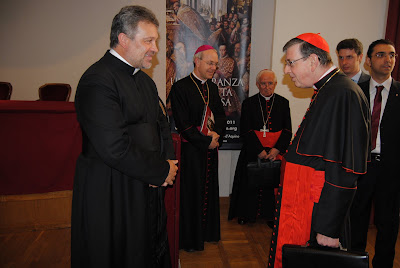 6ª
IMPÕE A MODERAÇÃO NO VESTIR
6ª
IMPÕE A MODERAÇÃO NO VESTIR
A
Igreja preservou sempre seus sacerdotes do vício de aparentar mais do que se é e
da ostentação dando-lhes um hábito singelo em que não cabem os luxos. A batina é
de uma peça (desde o pescoço até os pés), de uma cor (preta) e de uma forma
(saco). Os arminhos e ornamentos ricos se deixam para o templo, pois essas
distinções não adornam a pessoa se não o ministro de Deus para que dê realce às
cerimônias sagradas da Igreja.
Porém,
vestindo-se à paisana, a vaidade persegue o sacerdote como a qualquer mortal: as
marcas, qualidades do pano, dos tecidos, cores, etc. Já não está todo coberto e
justificado pelo humilde hábito religioso. Ao se colocar no nível do mundo, este
o sacudirá, à mercê de seus gostos e caprichos. Haverá de ir com a moda e sua
voz já não se deixará ouvir como a do que clamava no deserto coberto pela veste
do profeta vestido com pêlos de camelo.
Como
alguém que tem parte no Santo Sacerdócio de Cristo, o sacerdote deve ser exemplo
da humildade, da obediência e da abnegação do Salvador. A batina o ajuda a
praticar a pobreza, a humildade no vestiário, a obediência à disciplina da
Igreja e o desprezo das coisas do mundo. Vestindo a batina, dificilmente se
esquecerá o sacerdote de seu importante papel e sua missão sagrada ou confundirá
seu traje e sua vida com a do mundo.
Estas
sete excelências da batina poderão ser aumentadas com outras que venham à tua
mente, leitor. Porém, sejam quais forem, a batina sempre será o símbolo
inconfundível do sacerdócio, porque assim a Igreja, em sua imensa sabedoria, o
dispôs e têm dado maravilhosos frutos através dos séculos.
Una propuesta por los cincuenta años del Vaticano II LA VÍA SOBRENATURAL PARA RECOBRAR LA PAZ ENTRE EL PRE Y EL POST CONCILIO

por Enrico Maria Radaelli
La discusión que se está desarrollando en el sitio web de Sandro Magister entre escuelas de posiciones diferentes y opuestas sobre reconocer si el Concilio ecuménico Vaticano II representa continuidad o discontinuidad con la Tradición, aparte de llamarme a participar directamente desde los primeros movimientos, toca de cerca algunas páginas preliminares de mi reciente libro "La belleza que nos salva".
El hecho largamente más significativo del ensayo es la comprobada identificación de los "orígenes de la belleza" con las cuatro cualidades sustanciales - verdadero, uno, bueno, bello - que santo Tomás de Aquino afirma que son los nombres del Unigénito de Dios: identificación que debería aclarar de una vez por todas lo fundamental y el vínculo ya no más eludible que un concepto tiene con su expresión, es decir, el lenguaje con la doctrina que lo utiliza.
Me parece necesario intervenir y hacer algunas aclaraciones para quien quiere reconstruir la "Ciudad de la belleza" que es la Iglesia y retomar así el único camino (esta es la tesis de mi ensayo) que puede llevarnos a la felicidad eterna, es decir, que nos puede salvar.
Completaré mi intervención sugiriendo el pedido que ameritaría hacerse al Santo Padre para que - recordando con monseñor Brunero Gherardini que en el 2015 se cumplirá el aniversario cincuenta del Concilio (cfr. "Divinitas", 2011, 2, p. 188) - la Iglesia toda aproveche de tal extraordinario acontecimiento para restablecer la plenitud de aquel "munus docendi", de aquel magisterio, suspendido hace cincuenta años.
Respecto al tema en discusión, la cuestión ha sido bien resumida por el teólogo dominico Giovanni Cavalcoli: "El nodo del debate es este: estamos todos de acuerdo en que las doctrinas ya definidas [por el magisterio dogmático de la Iglesia anterior al Concilio], presentes en los textos conciliares son infalibles; lo que está en discusión es si son infalibles también los desarrollos doctrinales, la novedad del Concilio".
El dominico se da cuente que la necesidad es la de "responder afirmativamente a esta pregunta, porque de otro modo ¿que sería de la continuidad, al menos así como la entiende el Papa?" Y no pudiendo hacer, como es obvio, las afirmaciones que también quisiera hacer, el padre Cavalcoli les da la vuelta en las preguntas contrarias, a las que aquí daré la respuesta que tendrían si se siguiese la lógica "aletica", verificadora, que nos enseña la filosofía.
Primera pregunta: ¿Es admisible que el desarrollo de una doctrina de fe, o cercana a la fe, ya definida, sea falso?
Estimado padre Cavalcoli, usted, a decir verdad, habría querido decir: "No es admisible que el desarrollo de una doctrina de fe, o próxima a la fe, ya definida, sea falso". En cambio la respuesta es: sí, el desarrollo puede ser falso, porque una premisa verdadera no lleva necesariamente a una conclusión verdadera, sino que puede llevar también a una o más conclusiones falsas, tanto es así que en todos los Concilios del mundo - incluso en los dogmáticos - se puso en debate las posiciones más diferentes precisamente a causa de esa posibilidad. Para tener el esperado desarrollo de continuidad de las verdades reveladas por gracia no basta con ser teólogos, obispos, cardenales o Papas, sino que es necesario solicitar la asistencia especial, divina, dada por el Espíritu Santo sólo a aquellos Concilios que - declarados de carácter dogmático de manera solemne e indiscutible al momento de su apertura - se les ha garantizado formalmente esa asistencia divina. En tales casos sobrenaturales ocurre que el desarrollo dado a la doctrina sobrenatural resultará garantizado como verdadero en tanto cuanto ya han sido divinamente garantizadas sus premisas como verdaderas.
Eso no ocurrió en el último Concilio, declarado formalmente de carácter exquisitamente pastoral al menos tres veces: en su apertura, que es la que cuenta, luego en la apertura de la segunda sesión y por último en la clausura; y por ello en esa asamblea de premisas verdaderas se ha podido llegar a veces también a conclusiones al menos opinables (a conclusiones que, hablando canónicamente, entran en el tercer grado de constricción magisterial, lo que tratando de temas de carácter moral, pastoral o jurídico, requiere únicamente "religioso respeto") si no "incluso equivocadas", como reconoce también el padre Cavalcoli contradiciendo la tesis que sostiene, "e igual no infalibles", y que pues "pueden ser también modificadas", y por eso, aunque desgraciadamente no vinculan formalmente sino "sólo" moralmente al pastor que las enseña incluso en los casos de incierta factura, providencialmente no son para nada vinculantes obligatoriamente a la obediencia de la fe.
Por otra parte, si a grados diferentes de magisterio no se les corresponde grados diferentes de asentimiento del fiel, no se entiende para qué hay diferentes grados de magisterio. Los grados diferentes de magisterio se deben a grados diferentes de proximidad de conocimiento que ellos tienen con la realidad primera, con la realidad divina revelada a la que se refieren, y es obvio que las doctrinas reveladas directamente por Dios pretenden un respeto totalmente obligante (grado I), así como las doctrinas relacionadas a ellas, si es que son presentadas a través de definiciones dogmáticas o actos definitivos (grado II). Tanto la primera como la segunda se distinguen de la otras doctrinas que, no pudiendo pertenecer al primer grupo, podrán ser consideradas en el segundo sólo en el momento que se haya esclarecido con argumentos múltiples, prudentes, claros e irrefutables, su conexión íntima, directa y evidente con ello en el respeto más pleno del principio de Vincenzo di Lérins ("quod semper, quod ubique, quod ab omnibus creditum est"), garantizando así al fiel que esas también se encuentran ante el conocimiento más próximo de Dios. Todo ello, como se pude entender, se puede obtener solamente en el ejercicio más conciente, querido e implorado por la y para la Iglesia del "munus", del magisterio dogmático.
La diferencia entre las doctrinas de I y II grado y las de III viene dada por el carácter ciertamente sobrenatural de las primeras, que en cambio en el tercer grupo no está garantizado: quizá exista, pero quizá no. Lo que se debe acoger es que el "munus" dogmático es: 1) un don divino, pues 2) un don que pedir expresamente y 3) no pedir este don no ofrece pues alguna garantía de verdad absoluta, falta de garantía que libra al magisterio de toda obligación de exactitud y a los fieles de toda obligación de obediencia, aunque requiera su religioso respeto. En el grado III podría encontrarse indicaciones y conjeturas de matriz naturalista, y el cernidor para verificar si, una vez depuradas de tales eventuales infestaciones incluso microbianas, es posible elevarlas al grado sobrenatural puede cumplirse sólo confrontándolas con el fuego dogmático: la paja se quemará pero el fierro divino, si hay, brillará ciertamente en todo su fulgor.
Es eso lo que le sucedió a la doctrina de la Inmaculada Concepción y de la Asunción, hoy dogmas, es decir, artículos de fe pertenecientes hoy por derecho al segundo grupo. Hasta 1854 y 1950 respectivamente estas pertenecieron al grupo de las doctrinas opinables, al tercero, a las cuales se debía nada más que "religioso respeto", a la par de aquellas doctrinas nuevas que, enlistadas aquí más adelante en un breve y resumido inventario, se reunieron confusamente en las más recientes enseñanzas de la Iglesia de 1962. Pero en 1854 y 1950 el fuego del dogma las rodeó de su divina y peculiar marca, las encendió, las cribó, las imprimió y finalmente las selló eternamente como "ab initio" ya eran en su más íntima realidad: verdades muy ciertas y universalmente comprobadas, de derecho pertenecientes a la matriz sobrenatural (el segundo) aunque hasta entonces no formalmente reconocidas bajo tal esplendida vestidura. Feliz reconocimiento, y aquí se quiere precisamente subrayan que fue un reconocimiento de los presentes, del Papa en primer lugar, y de ninguna manera una transformación del sujeto: como cuando los críticos de arte, después de haberla examinado bajo todo punto de vista e indicios útiles para valorarla o desmentirla - certificados de providencia, de pasajes de propiedad, pruebas de pigmentación, de velamiento, de retoques, radiografías y reflectografías - reconocen en un cuadro de autor su más indiscutible y palmaria autenticidad.
Esas dos doctrinas se revelaron ambas de factura divina, y de la más preciada. Si alguna pues de aquellas más recientes es de la misma altísima mano se descubrirá pacíficamente con el más espléndido de los medios.
Segunda pregunta: ¿Puede el nuevo campo dogmático estar en contradicción con el antiguo?
Obviamente no, no puede de ningún modo. En efecto, después del Vaticano II no tenemos algún "nuevo campo dogmático", como se expresa el padre Cavalcoli, a pesar de que muchos quieren hacer pasar por tal las novedades conciliares y postconciliares, aunque el Vaticano II sea un simple - si bien solemne y extraordinario - "campo pastoral". Ninguno de los documentos citados por el padre Basil Valuet en su nota 5 declara una autoridad del Concilio mayor que aquella de la que este fue investido desde el inicio: nada más que una solemne y universal, es decir, ecuménica, reunión "pastoral" con la intención de dar al mundo algunas indicaciones sólo pastorales, negándose declaradamente y patentemente definir dogmáticamente o sancionar con anatema alguna cosa.
Todos los neomodernistas de prestigio o simplemente noveles que se quiera decir (como subraya el profesor Roberto de Mattei en su libro "El concilio Vaticano II. Una historia jamás escrita") que fueron activos en la Iglesia desde los tiempo de Pío XII - teólogos, obispos y cardenales de la "théologie nouvelle" como Bea, Câmara, Carlo Colombo, Congar, De Lubac, Döpfner, Frings con su perito, Ratzinger; König con el suyo, Küng; Garrone con el suyo, Daniélou; Lercaro, Maximos IV, Montini, Suenens, y, casi un grupo aparte, los tres sobresalientes de la llamada escuela de Bolonia: Dossetti, Alberigo y hoy Melloni – en el desarrollo del Vaticano II y después han cabalgado con toda suerte de expedientes de ruptura con las detestadas doctrinas anteriores sobre el mismo presupuesto, errando sobre la indudable solemnidad de la extraordinaria reunión; por lo que se tiene que todos estos realizaron de hecho una ruptura y discontinuidad proclamando con las palabras solidez y continuidad. Que haya después de parte de ellos, y luego universalmente hoy, deseos de ruptura con la Tradición se puede notar al menos: 1) en la más destructiva masacre perpetrada a la magnificencia de los altares antiguos; 2) en el igualmente universal rechazo de hoy en día de todos los obispos del mundo excepto poquísimos, a dar el mínimo espacio al rito tridentino o gregoriano de la misa, en irrazonable y ostentosa desobediencia a las directivas del motu proprio "Summorum Pontificum". "Lex orandi, lex credendi": si todo es no es rechazo de la Tradición, entonces ¿qué cosa es?
A pesar de ello, y la gravedad de todo ello, no se puede todavía hablar de ningún modo de ruptura: la Iglesia está "todos los días" bajo la divina garantía dada por Cristo en el juramento de Mt 16,18 ("Portæ inferi non prævalebunt") y de Mt 28,20 ("Ego vobiscum sum omnibus diebus") lo que la pone metafísicamente al recaudo de cualquier temor en ese sentido, aunque el peligro está siempre a las puertas y frecuentemente los intentos están en acto. Pero quien sostiene una ruptura ya ocurrida - como hacen algunas de las eminencias antes mencionadas, pero también los sedevacantistas - cae en el naturalismo.
Pero no se puede hablar tampoco de solidez, es decir de continuidad con la Tradición, porque está ante los ojos de todos que las más diferentes doctrinas salidas del Concilio y del postconcilio - eclesiología; panecumenismo; relación con las otras religiones; mismidad del Dios adorado por los cristianos, judíos y musulmanes; correcciones de la "doctrina de la sustitución" de la Sinagoga con la Iglesia en "doctrina de las dos salvaciones paralelas"; unicidad de las fuentes de la Revelación; libertad religiosa; antropología antropocéntrica en vez que teocéntrica; iconoclastía; o aquella de la cual nació el "Novus Ordo Missae" en lugar del rito gregoriano (hoy recogido junto al primero, pero subordinadamente) - son todas las doctrinas que una por una no resistirían la prueba de fuego del dogma, si se tuviese el coraje de intentar dogmatizarlas: fuego que consiste en darles sustancia teológica con solicitud precisa de asistencia del Espíritu Santo, como ocurrió a su tiempo en el "corpus theologicum" puesto en la base de la Inmaculada Concepción o de la Asunción de María.
Esas frágiles doctrinas están vivas únicamente por el hecho de que no hay ninguna barrera dogmática levantada para no permitir su concepción y uso. Pero luego se impone una no auténtica continuidad con el dogma para pretender para aquellas el asentimiento de fe necesario para la unidad y para la continuidad (cfr. las pp. 70ss, 205 y 284 del mi ya mencionado libro "La belleza que nos salva"), quedando así todas ellas en peligroso y "frágil límite entre continuidad y discontinuidad" (p. 49), pero siempre más acá del límite dogmático, que de hecho, si se aplica, determinaría el fin de las mismas. También la afirmación de continuidad entre esas doctrinas y la Tradición peca en mi opinión de naturalismo.
Tercera pregunta: ¿Si negamos la infalibilidad de los desarrollos doctrinales del Concilio que parten de previas doctrinas de fe o próximas a la fe, no debilitamos la fuerza de la tesis continuista?
Cierto que la debilita, estimado padre Cavalcoli, más aún: la anula. Y da fuerza a la tesis opuesta, como es justo que sea, que sostiene que no hay continuidad.
Nada de ruptura, sino también nada de continuidad. ¿Y entonces qué? La vía de salida la sugiere Romano Amerio (1905-1997) con la que el autor de "Iota unum" define "la ley de la conservación histórica de la Iglesia", retomada en la p. 41 de mi ensayo, por la cual "la Iglesia no se pierde en el caso de que no 'empate' la verdad, sino en el caso de que 'pierda' la verdad". ¿Y cuando la Iglesia no 'empata' la verdad? Cuando sus enseñanzas la olvidan, o la confunden, la enturbian, la mezclan, como ha ocurrido (no es la primera vez y no será la última) desde el Concilio hasta hoy. ¿Y cuando 'perdería' la verdad? (En condicional: si está visto que no puede de ningún modo perderla). Sólo si la golpease de anatema, o si viceversa dogmatizase una doctrina falsa, cosa que podría hacer el Papa y sólo el Papa, si (en la metafísicamente imposible hipótesis que) sus labios dogmatizantes y anatemizantes no estuvieran sobrenaturalmente atados por los dos arriba mencionados juramentos de Nuestro Señor. Insistiría en este punto, que me parece decisivo.
Aquí se adelantan unas hipótesis, pero - como digo en mi libro (p. 55) - "dejando a la competencia de los pastores toda verificación de la cosa y toda ulterior consecuencia, por ejemplo de si y de quién eventualmente, y en qué medida, haya incurrido o incurra" en los actos configurados. En las primerísimas páginas evidencio en especial cómo no se puede levantar represas al río de una belleza salvadora si no es vaciando la mente de toda equivocación, error o malentendido: la belleza se acompaña únicamente de la verdad (p. 23), y volver a hacer lo bello en el arte, al menos en el arte sacra, no se logra si no es trabajando en lo verdadero de la enseñanza y del acto litúrgico.
Lo que a mi parecer se está perpetrando en la Iglesia desde hace cincuenta años es una rebuscada amalgama entre continuidad y ruptura. Es el estudiado gobierno de las ideas y de las intenciones espurias en el cual se ha cambiado la Iglesia sin cambiarla, bajo la cubierta (también ilustrada nítidamente por monseñor Gherardini en sus más recientes libros) de un magisterio intencionalmente suspendido - a partir del discurso de apertura del Concilio "Gaudet mater ecclesia" - en una del todo innatural y del todo inventada forma suya, llamada, con rebuscada imprecisión teológica, "pastoral". Si la Iglesia es vaciada de las doctrinas poco o nada adecuadas al ecumenismo y por ello despreciadas por aquellos más prestigiosos mencionados más arriba y se le ha rellenado de las ideas ecuménicas de aquellos mismos, y eso se ha hecho sin tocar para nada las cubiertas metafísicas, por naturaleza suya dogmáticas (cfr. p. 62), es decir, por naturaleza sobrenatural, sino trabajando únicamente en aquel campo de su magisterio que infiere únicamente sobre su "conservación histórica".
En otras palabras: no hay ruptura formal, ni por lo demás formal continuidad, únicamente porque los Papas de los últimos cincuenta años se niegan ratificar en la forma dogmática de II nivel las doctrinas de III que bajo su gobierno están devastando y vaciando la Iglesia (cfr. p. 285). Eso quiere decir que de esa manera la Iglesia no empata más la verdad, sino que ni siquiera la pierde, porque los Papas, incluso con ocasión del Concilio, formalmente se han negado a dogmatizar las nuevas doctrinas y a declarar anatema a las más desestimadas (o correctas o engañosas) doctrinas del periodo anterior.
Como se ve, se podría también considerar que esa muy incómoda situación configuraría un pecado del magisterio, y grave, contra la fe así como contra la caridad (p. 54): en efecto, no parece que se pueda desobedecer al mandamiento del Señor de enseñar a las gentes (cfr. Mt 28, 19-20) con toda la plenitud del don de conocimiento que se nos ha alcanzado, sin con ello "desviar de la rectitud que el acto - es decir, 'la enseñanza educativa en la verdadera doctrina' - debe tener" (Summa Theologiae I, 25, 3, ad 2). Pecado contra la fe porque se la pone en peligro, y efectivamente la Iglesia en los últimos cincuenta años, vaciada de doctrinas verdaderas, se ha vaciado de fieles, de religiosos y de sacerdotes, convirtiéndose en la sobra de si misma (p. 76). Pecado contra la caridad porque se priva a los fieles de la belleza de la enseñanza magisterial y visible del cual sólo la verdad resplandece, como lo ilustro en todo el segundo capítulo de mi libro. El pecado sería de omisión: sería el pecado de "omisión de la dogmaticidad propia de la Iglesia" (pp. 60ss), con la que la Iglesia intencionalmente no sellaría sobrenaturalmente y así no garantizaría las indicaciones sobre la vida que nos da.
Este estado de pecado en el que se estaría derramando la santa Iglesia (se entiende siempre: de algunos hombres de la santa Iglesia, o sea la Iglesia en su componente histórica), si se encuentra, debería ser quitado y también lavado penitencialmente lo más pronto, ya que, como el cardenal José Rosalio Castillo Lara escribía al cardenal Joseph Ratzinger en 1988, su actual obstinado y culpable mantenimiento "favorecería la muy condenable tendencia […] a un equívoco gobierno llamado 'pastoral', que en el fondo no es pastoral, porque lleva a descuidar el debido ejercicio de la autoridad con daño al bien común de los fieles" (pp. 67s).
Para restituir a la Iglesia la paridad con la verdad, como le fue restituida cada vez que se encontró en travesías dramáticas similares, no hay otra vía que regresar a la plenitud de su "munus docendi", haciendo pasar por la criba del dogma a 360 grados todas las falsas doctrinas de las que está empapado, y retomar como "habitus" de su enseñanza más ordinaria y pastoral (en el sentido riguroso del término: transferencia de la divina Palabra en la diócesis y en las parroquias de todo el mundo") la actitud dogmática que la ha conducido sobrenaturalmente hasta aquí en los siglos.
Retomando la plenitud magisterial suspendida se restituiría a la Iglesia histórica la esencia metafísica que virtualmente se le ha sustraído, y con ello se haría volver sobre la tierra su belleza divina en toda su más reconocida y degustada fragancia.
Para concluir, una propuesta
Se requiere audacia. Y se requiere Tradición. En vista del cumplimiento el 2015, cincuenta aniversario del Concilio de la discordia, sería necesario poder promover un fuerte y largo pedido al Trono más alto de la Iglesia para qué, en su benignidad, sin perder la ocasión de verdad especial de tal excepcional cumplimiento, considere que hay un único acto que puede devolver paz entre la enseñanza y la doctrina emanadas de la Iglesia antes y después de la fatal asamblea, y este único, heroico, muy humilde acto es el de acercar al sobrenatural fuego del dogma las doctrinas arriba señaladas antipáticas a los fieles de parte tradicionalista, y las contrarias: lo que debe arder arderá, lo que debe resplandecer resplandecerá. De aquí al 2015 tenemos delante tres años abundantes. Es necesario utilizarlos de la mejor manera. Las oraciones y las inteligencias deben ser llevadas a la presión máxima: fuego al calor blanco. Sin tensión no se obtiene nada, como a Laodicea.
Este acto que aquí se propone cumplir, el único que podría volver a reunir en un único cuerpo, como debe ser, las dos potentes almas que palpitan en la santa Iglesia en el mismo ser, reconocibles la una en los hombres "fieles especialmente a lo que la Iglesia es", la otra en los hombres cuyo espíritu tiende más a su mañana, es el acto que, poniendo fin con bella decisión a una cincuentenaria situación más bien anticaritativa y suficientemente insincera, resume en un gobierno sobrenatural los santos conceptos de Tradición y audacia. Para reconstruir la Iglesia y retornar a hacer belleza, el Vaticano II debe ser leído en el entramado de la Tradición con la audacia encendida del dogma.
Pues todos los tradicionalistas de la Iglesia, en todo orden y grado como en todo particular corte ideológico que pertenezcan, sepan congregarse en una única solicitud, en un único proyecto: llegar al 2015 con la más amplia, aconsejada y bien delineada invitación con el fin de que tal conmemoración sea para el Trono más alto la ocasión más propia para retomar el divino "munus docendi" a plenitud.
__________
El libro de Enrico Maria Radaelli "La belleza que nos salva" (prefacio de Antonio Livi, 2011, pp. 336, euro 35,00) puede ser solicitado directamente al autor (enricomaria.radaelli@tin.it) o a la Libreria Hoepli de Milán (www.hoepli.it).





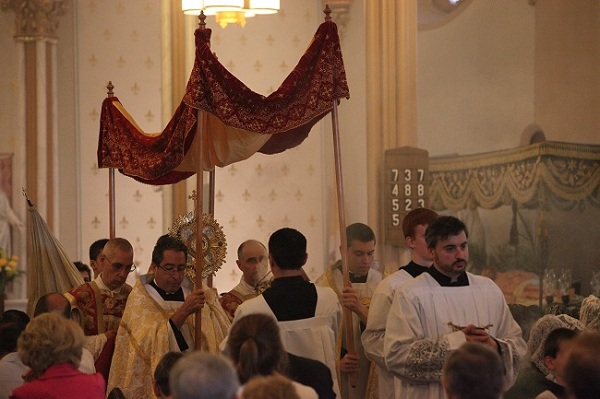
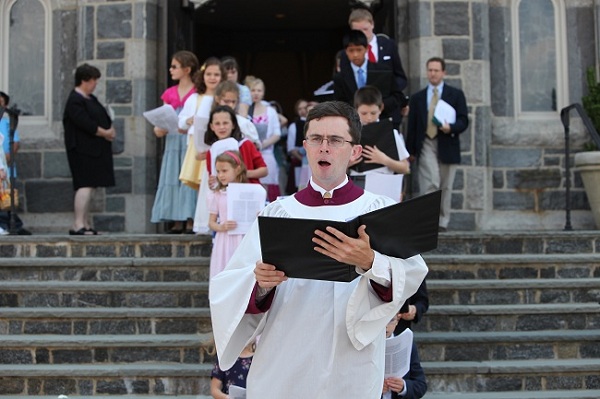
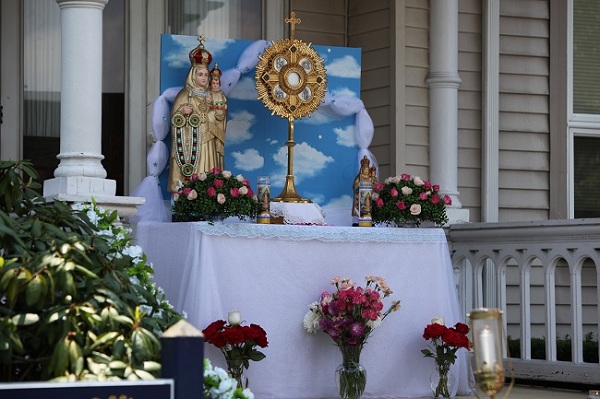
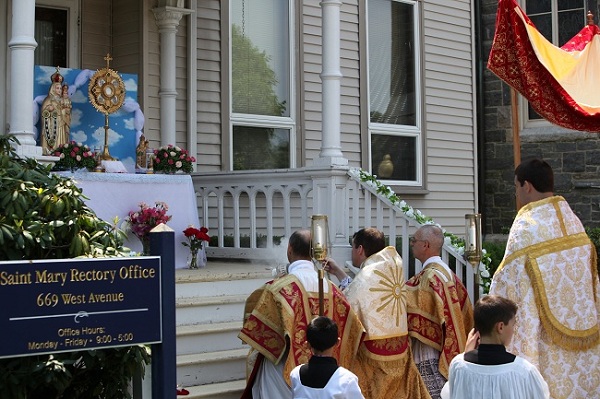
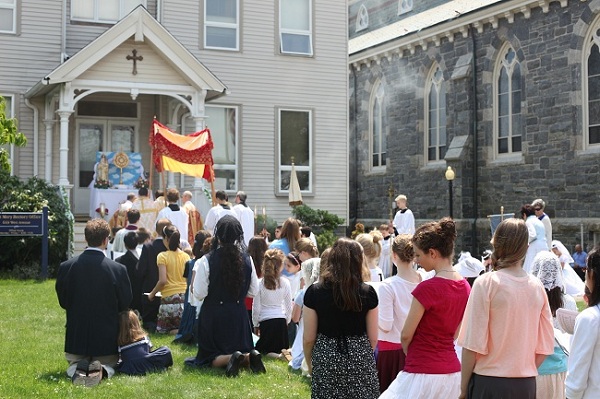
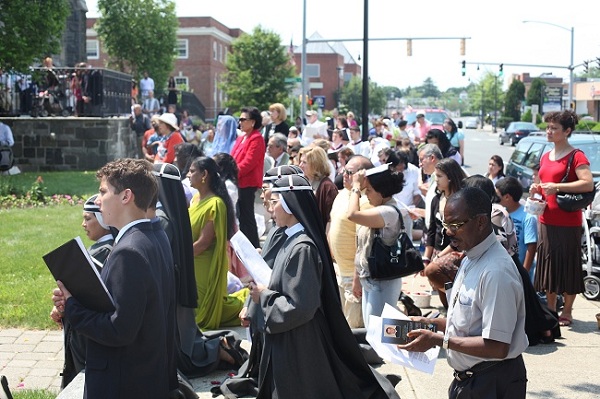

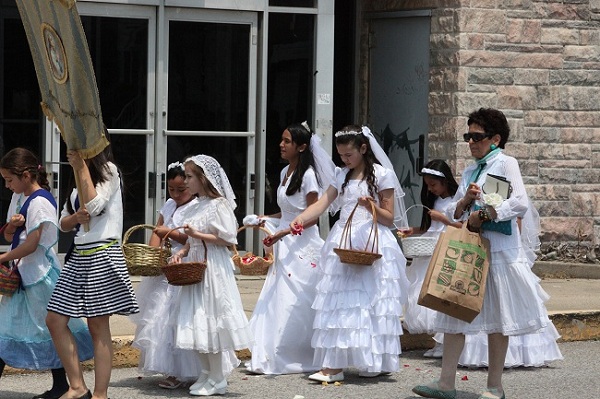

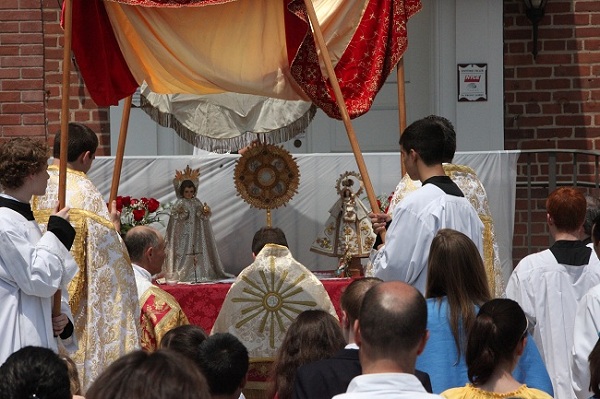
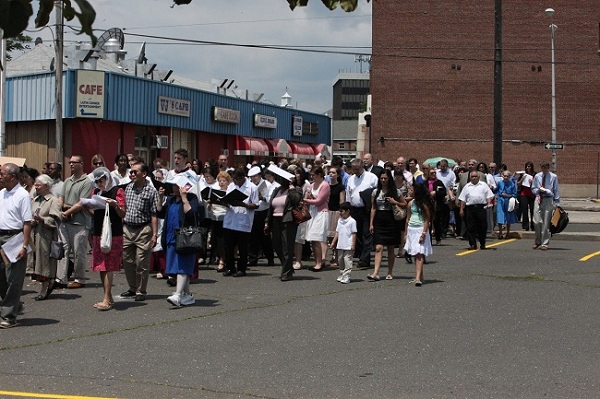
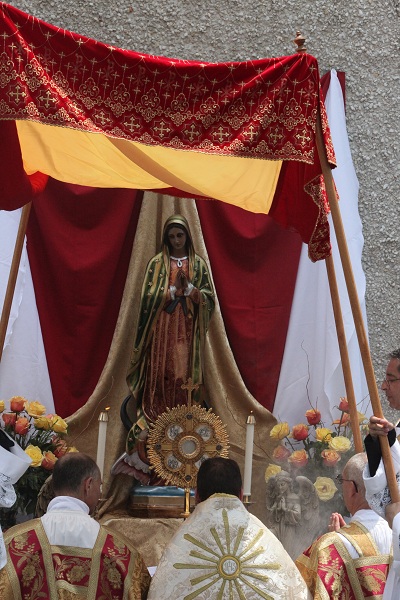
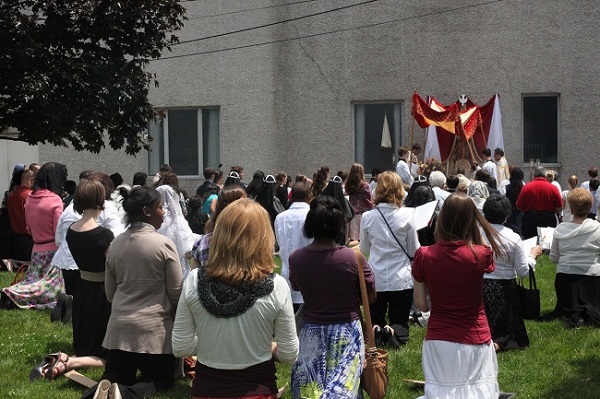
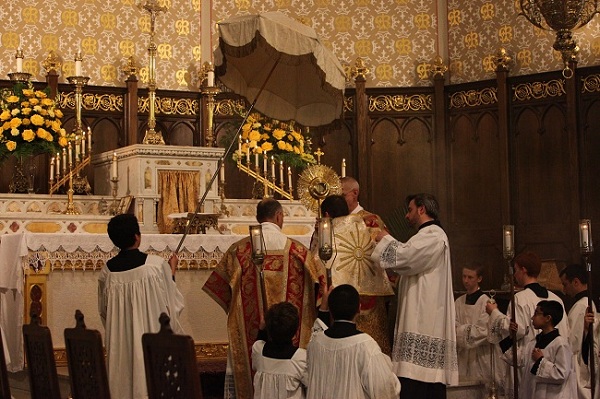








Sem comentários:
Enviar um comentário